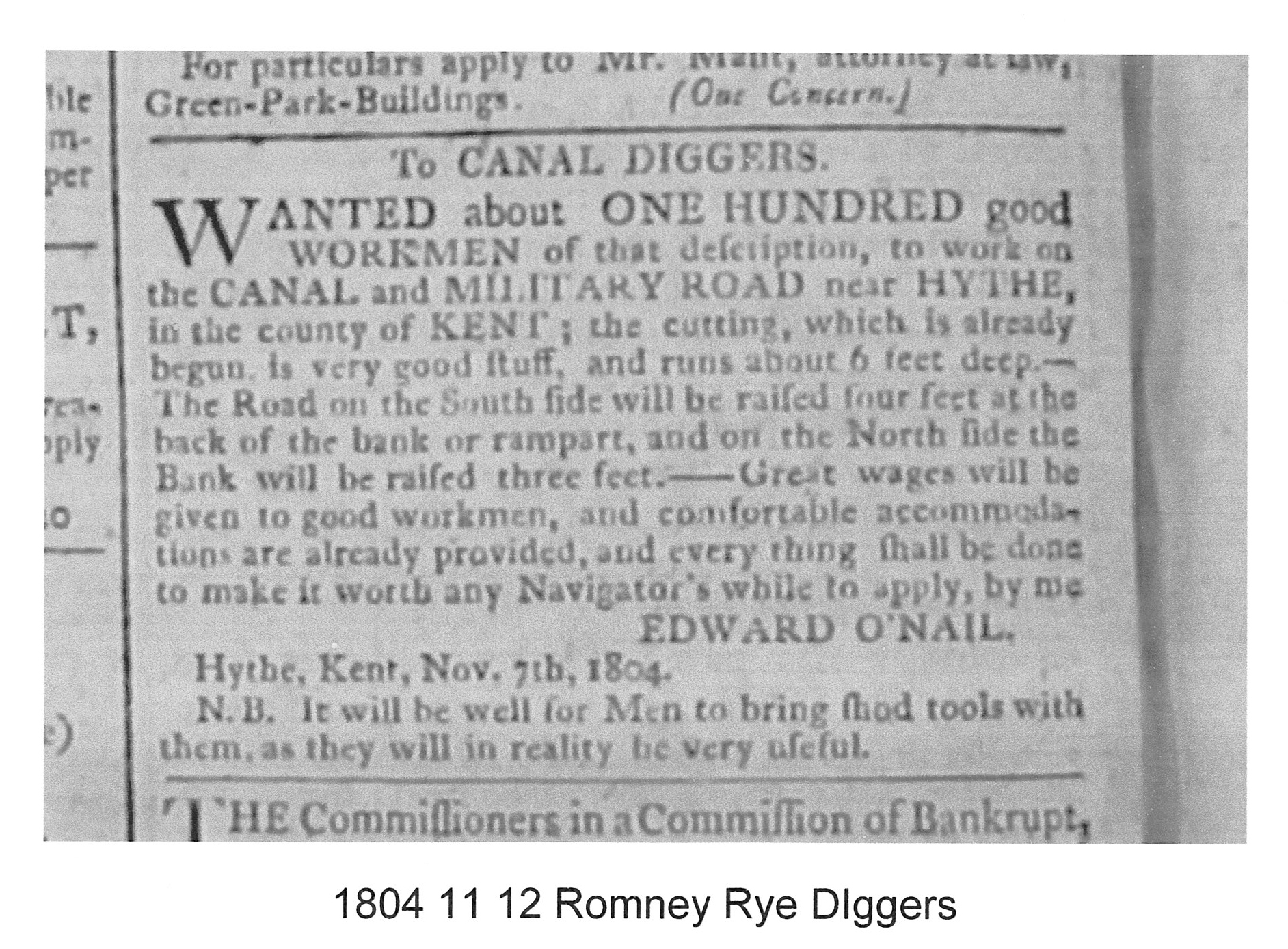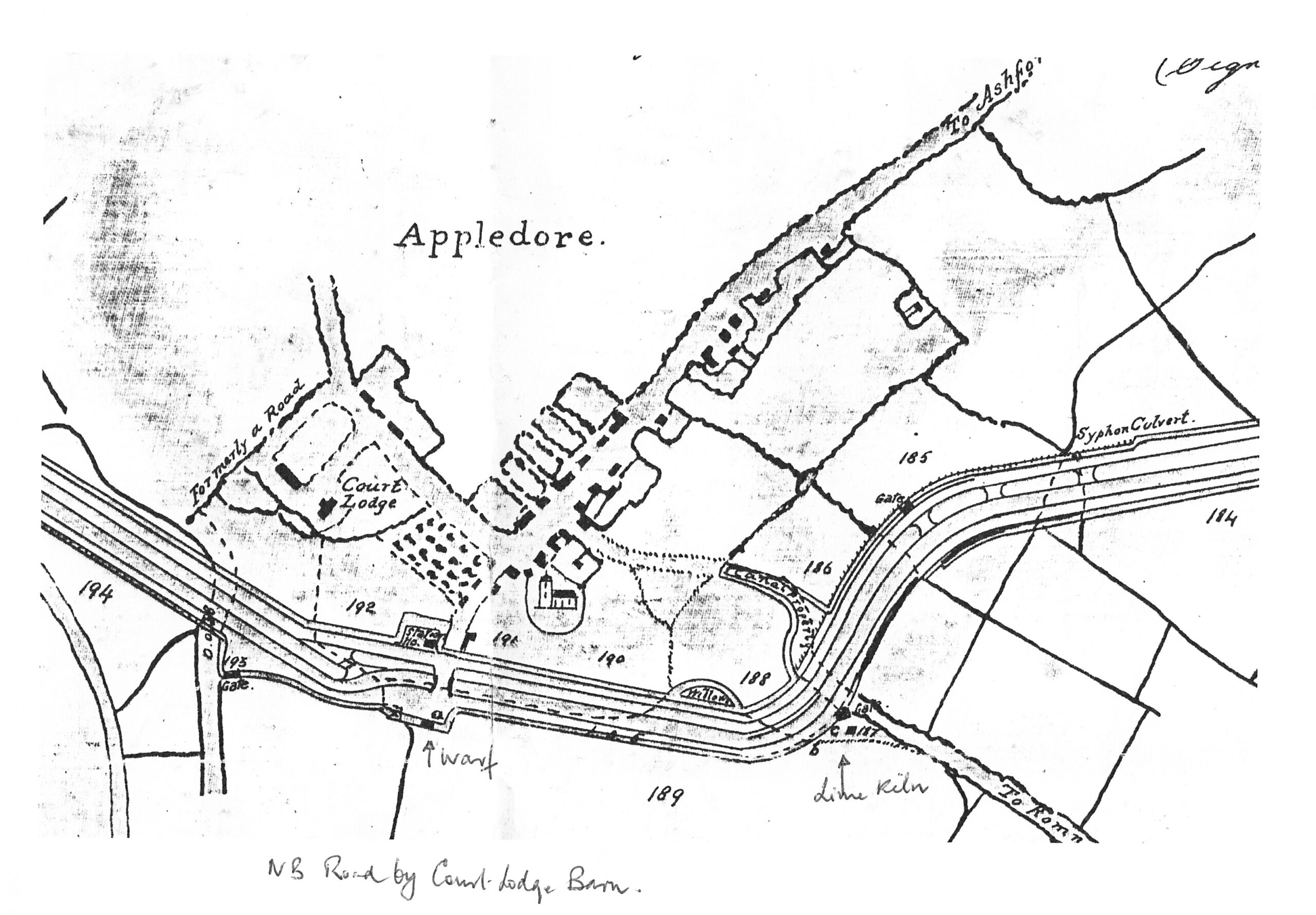The Royal Military Canal
In 1803 Napoleon Boneparte was quoted as saying that “The Channel is but a ditch and anyone can cross it that has the courage. Let us be masters of the straits for 6 hours and we can be masters of the world”. In 1804 Napoleon and his all conquering French armies of over 130,000 troops were based at Boulogne ready to invade England, in comparison we had only a third of that number to defend our shores.
William Pitt the Younger was recalled from his position as Lord Warden of the Cinque Ports to become Prime Minister for the second time and put in place a defence of the British coastal waters to foil an impending invasion by Napoleon, it was reasoned that it would be undertaken on the shortest route across the channel.

In October 1804 work began on the Royal Military Canal at Seabrook which would enable troops and equipment to be moved twice as fast than if they marched; but a harsh winter and flooding meant that a mere six miles of the 19miles had been completed by the intended date of June, 1805. The digging of the canal provided much local work for civilians, the military built the ramparts and turfed the banks, however, a constant problem with the trenches filling with water meant hand pumps were soon replaced with steam driven pumps. The canal was meant to be 19 meters wide and three meters deep, but time and money meant that it is only half that width and 2 meters deep in places. The Canal was deliberately constructed with embrasures, known as enfilades, to enable guns to be fired the whole length of the canal covering every flank thus making it more hazardous for invaders to cross.

In 1806 the Royal Military Canal although not completed, was opened to the Rother at Iden Lock and the Duke of York was taken from Hythe in a small boat drawn by horses, the journey taking two and three quarter hours.
By the time the canal was completed in 1808/9, the threat of an invasion was over and Admiral Lord Nelson had died at Trafalgar (1805). Napolean found himself taking on campaigns that were no longer successful and was eventually exiled to Elba (1814).
The Government was criticised for the costly amount of money spent on the canal over £10 million in today’s money and the whole project was seen as a white elephant, a scandalous waste of public money and of no real defence if Britain was invaded. In order to avoid embarrassment the Government in 1810 tried to recoup some of the money by opening up the canal to barges and the public and later installing tolls at Rye, Iden and Winchelsea. Barges were horse drawn and a regular service from Hythe to Rye was opened and it took nearly 4 hours; there was also a service between Hythe and Appledore at that time. Sadly the income was never enough to cover the building and maintenance costs of the canal and by 1851 the railways had taken most of their trade.
In November, 1808 a great storm and high seas flooded the country between Shorncliffe and West Hythe which destroyed the South Bank of the Canal for nearly two miles. The meadows in front of Hythe were six feet under water and the canal was level with the meadows. The lock gates were opened and the water rushed into the river Rother. To prevent a similar incident in the future, a piece of land 30feet wide and 5,380 feet long between Twiss Bridge (named after Brigadier General William Twiss who was responsible for the construction of the Martello Towers) and Sir John Honeywood’s wall, was purchased to form a sea embankment. A similar storm in January, 1809 caused much less damage due to the embankment, except for a part of the beach which was washed into the canal.

Today the canal provides huge benefits by preventing flooding to farm land and provides water for farm animals and wildlife alike.
Walkers and bird watchers enjoy the towpaths and the canal is used for coarse fishing and canoeing. You may see or hear the marsh frogs, watch the swans, herons, kingfishers and dragonflies, so different from its intended purpose.
Books on the Military Canal:
The Royal Military Canal. A Brief History by Geoff Hutchinson
The Royal Military Canal. By P.A.L Vine.
The Royal Military Canal. History & Guide by John Winnifrith.
The Royal Military Canal. Pack of ten self guided walks produced by the Romney Marsh Countryside Project
